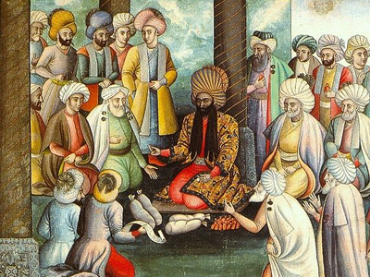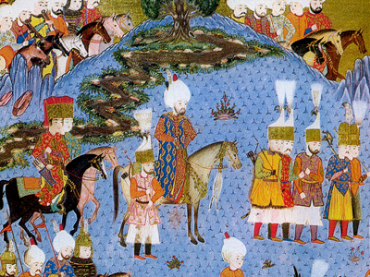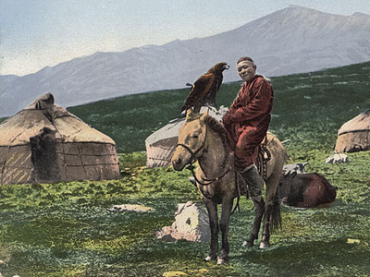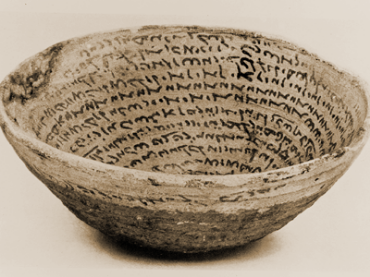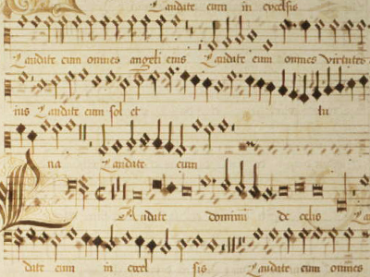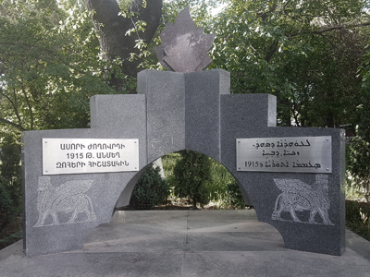History
Remembering Music in Early Greece
Series: Analecta Gorgiana 1052
ISBN: 978-1-4632-0100-5
This paper contemplates the various means by which the Ancient Greeks preserved information about their musical history, highlighting oral/aural tradition and the transition to literacy when inscriptions could capture information in roughly datable contexts. Music history sources and motives are also examined.
$40.00
From Music Archaeology to Historiography
Andean Music Archaeology and Musical Instruments, Singing and Dancing in Guaman Poma's Nuéva Crónica y Bien Gobierno
Series: Analecta Gorgiana 1053
ISBN: 978-1-4632-0101-2
Hickmann describes a 17th century work by Guaman Poma chronicling the first period of the Conquista. Details from this book are comparable to archaeological finds of musical instruments that have since disappeared. The author provides illustrations of ancient Andean instruments.
$36.00
Music-Archaeological Research on Pre-Columbian Music Cultures 1880-1920
Series: Analecta Gorgiana 1054
ISBN: 978-1-4632-0102-9
This paper contains an overview of Pre-Columbian music research between 1880 and 1920. Figures and the interdisciplinary direction of the research movement are discussed in detail. Many of these early studies remain ignored, which is a concern for music historiography.
$37.00
Antiquarians, Archaeologists and Music in Nineteenth Century London
Early Conversations in Music’s Prehistory
Series: Analecta Gorgiana 1055
ISBN: 978-1-4632-0103-6
Proceedings from the British Archaeological Association contain music studies from 150 years ago. Lawson raises a historiographical concern for these early discussions, as many of the authors are forgotten.
$37.00
Studies of Ancient Nordic Music, 1915–1940
Series: Analecta Gorgiana 1056
ISBN: 978-1-4632-0104-3
The pioneers who contributed towards the formative period of Scandinavian musicology (ca. 1915–1940) were highly interested in ancient music. Kolltveit describes approaches by pioneers Hammerich, Panum, Andersson, Norlind, Leden and Tveitt in their cultural, political, and academic contexts.
$38.00
Music Archaeology in Scandinavia, 1800-1990
Series: Analecta Gorgiana 1057
ISBN: 978-1-4632-0105-0
Lund describes the development of Scandinavian music history from 1797 with the first discovery of lurs in Denmark to the modern discipline as it is established in research during the 19th and 20th centuries. Systematic orientation came in the 1970s.
$38.00
Ephrem the Syrian's Hymns on the Unleavened Bread
Translation and Introduction by J. Edward Walters
Series: Texts from Christian Late Antiquity 30
ISBN: 978-1-4632-0159-3
In this set of homilies Ephrem (306-373) invites the reader into a world of symbolic interpretation filled with imagination brimming beneath the surface of word-plays, alliteration, and typological comparisons. These hymns thrust the reader into the middle of a context in which Christians and Jews maintain competing practices of a Passover service to the extent that Ephrem feels the need to distinguish between the symbol and the reality. These homilies are presented in their Syriac original alongside an annotated English translation.
$41.00
Persian Period Jerusalem and Yehud
A Rejoinder
Series: Analecta Gorgiana 1078
ISBN: 978-1-4632-0125-8
The author responds to criticism against his prior publications, when his conclusions were based foremost on the relevant archaeological findings. It is a debate between methodologies used by archaeology and the assumptions of textual analysis within biblical scholarship.
$33.00
The Contested History of a Book
The German Bible of the Later Middle Ages and Reformation in Legend, Ideology, and Scholarship
Series: Analecta Gorgiana 1079
ISBN: 978-1-4632-0126-5
This paper explores the common misconception that vernacular translations of the Bible were not available prior to Luther. In fact, Luther may have relied on these to accomplish his own work toward what became a more preferable translation.
$39.00
Literary Interactions between Syriac and Armenian
Series: Analecta Gorgiana 1094
ISBN: 978-1-4632-0142-5
Thomson surveyed Syriac literary influence on Armenian Christianity from the time of early missionary activity to the middle ages. Evidence suggests that Armenian Christians are greatly indebted to Syriac contributions on sainthood and theology, but less so for historical writing.
$34.00
Ural-Altaic Studies 1 (4) 2011
Editor Maria Amelina
Series: Ural-Altaic Studies 4
ISBN: 978-1-4632-0143-2
The journal "Ural-Altaic studies" is concerned with linguistic matters, connected with the Uralic and Altaic languages. It is bilingual; all papers are published in both Russian and English.
$67.00
Journal for Late Antique Religion and Culture
ISBN: 978-1-4632-0147-0
The Journal for Late Antique Religion and Culture (JLARC) is a peer-reviewed free-access online journal edited by members of the Cardiff Centre for Late Antique Religion and Culture (CLARC) and published by Cardiff University (http://www.cardiff.ac.uk/clarc).
$42.00
Journal for Late Antique Religion and Culture
ISBN: 978-1-4632-0148-7
The Journal for Late Antique Religion and Culture (JLARC) is a peer-reviewed free-access online journal edited by members of the Cardiff Centre for Late Antique Religion and Culture (CLARC) and published by Cardiff University (http://www.cardiff.ac.uk/clarc).
$49.00
Journal for Late Antique Religion and Culture
ISBN: 978-1-4632-0149-4
The Journal for Late Antique Religion and Culture (JLARC) is a peer-reviewed free-access online journal edited by members of the Cardiff Centre for Late Antique Religion and Culture (CLARC) and published by Cardiff University (http://www.cardiff.ac.uk/clarc).
$57.00
The Sentences of the Syriac Menander
Introduction, Text and Translation, and Commentary
ISBN: 978-1-61143-488-0
The Sentences of the Syriac Menander appears in two Syriac manuscripts in the British Library, a full version in one codex, and a far shorter version, only a small fraction thereof, in another. This book presents a commentary on the text in its complete version focusing on parallels from both Jewish tradition and the Greco-Roman world, showing that the text is not, as it claims, the work of the Greek author Menander, but rather a work of Jewish Wisdom Literature composed in Syriac, possibly in the ancient city of Edessa itself, and preserved within Christian monastic circles.
$149.00
Early Christian Attitudes to War, Violence and Military Service
ISBN: 978-1-61143-486-6
The early Christians were not of one mind when it came to war, violence and military service. There was a bewildering variety of opinion as to how they understood their place in the world. It seems however that generally they did not stand apart from society. On the contrary, they were happy to integrate and conform and they often accepted war and service in the army as activities which did not raise specific ethical problems.
$182.00
The Mystery of Anointing
Hippolytus' Commentary on the Song of Songs in Social and Critical Contexts: Texts, Translations, and Comprehensive Study
By Yancy Smith
ISBN: 978-1-4632-0218-7
The first English translation and study of St. Hippolytus' fascinating, early third-century commentary 'On the Song of Songs'. Important for the history of biblical interpretation, rival identities of early Christians, liturgy, and mystagogy in the pre-Constantinian church.
$243.00
Seeing the God
Ways of Envisioning the Divine in Ancient Mediterranean Religion
Edited by Jeffrey B. Pettis
ISBN: 978-1-61143-251-0
"When people prayed, they expected their gods to come," wrote Robin Lane Fox, providing the impetus for this volume of collected essays exploring the concept of how the ancients “envisioned” the deities within various ancient religious traditions. The perspectives of Judaism, Gnosticism, Syriac Christianity, Byzantium, and Classical Greco-Roman religion and philosophy are considered. Specific emphasis is given to phenomena such as dreams, visions, and initiatory rites mediating the divine encounter.
$143.00
Kubaba 2 (2011)
Journal of Ancient Southwest Asia and Eastern Mediterranean Studies
Series: Kubaba 2
ISBN: 978-1-60724-679-4
Kubaba is a peer-reviewed journal which specializes in the geographical region of Southwest Asia, the Eastern Mediterranean, and the Aegean before the Classical Era. It publishes articles, notes, news and reviews.
$60.00
Ural Altaic Studies 2 (5) 2011
Series: Ural-Altaic Studies 5
ISBN: 978-1-4632-0168-5
The journal "Ural-Altaic studies" is concerned with linguistic matters, connected with the Uralic and Altaic languages. It is bilingual; all papers are published in both Russian and English.
$64.00
From Ugarit to Nabataea
Studies in Honor of John F. Healey
Edited by George Anton Kiraz & Zeyad Al-Salameen
Series: Gorgias Ugaritic Studies 6
ISBN: 978-1-4632-0180-7
From Ugarit to Nabataea is a collection of articles on the texts and cultures of various Near and Middle Eastern societies such as Ugarit, Ancient North Arabia, Nabatea, Palmyra, Edessa, the monasteries of Mesopotamia, and modern day Syriac-speaking communities. They include discussion of the religious beliefs, iconography, epigraphy, architecture and language of these societies – fields to which John F. Healey has contributed in his long, distinguished and varied career.
$160.00
Revolt in Palestine in the Eighteenth Century
The Era of Shaykh Zahir al-‘Umar
ISBN: 978-1-4632-0002-2
In the turbulent atmosphere of the eighteenth century when the Ottoman Empire was enfeebled, local leaders far from Istanbul took matters into their own hands. At first, these leaders only regulated local trade and tax collection, but soon, leaders like Shaykh Zahir al-‘Umar — a district tax collector in Palestine— saw opportunities to amass great wealth and power while providing autonomous government and safer roads to their local followers. A gripping and fascinating read, Ahmad Joudah’s biography of Shaykh Zahir is crucial for scholars seeking to contextualize developments in modern Palestinian history within the politics of the late Ottoman Empire.
$178.00
A History of the Syrian Community of Grand Rapids, 1890-1945 (hardback)
From the Beqaa to the Grand
ISBN: 978-1-61719-028-5
This book provides the first history of the old Syrian community of Grand Rapids, Michigan, 1890-1945, focusing on the slow process of ethnic acculturation during which community members developed a hybrid culture. Unlike some Middle Eastern immigrant groups, these Syrians were able to maintain their identity by establishing their own churches, which still exist today. At every opportunity this group is situated within the larger historical context, the decline of the Ottoman Empire, the French Mandate in Syria, the Progressive Movement, the Americanization program of the 1920s, the Great Depression and the two world wars.
$163.00
Bardaisan of Edessa
Introduction by Jan Willem Drijvers; By H.J.W. Drijvers
Series: Gorgias Eastern Christian Studies 36
ISBN: 978-1-4632-0188-3
In this volume, a reprint of his 1966 monograph, H. J. W. Drijvers investigates the life and teachings of Bardaisan of Edessa, determining his place in the religious and cultural life of Edessa in the second half of the second century of the common era.
$163.00
Untersuchungen über die Geschichte des Königreichs Osroëne
Series: Syriac Studies Library 3
ISBN: 978-1-61719-417-7
This volume is a good quality reprint of the 1887 edition of Alfred von Gutschmid's classic text. It will be of interest to scholars in the Syriac-speaking kingdom of Osroene (or Edessa).
$141.00
Filter by
Filter by price
Filter by manufacturer

